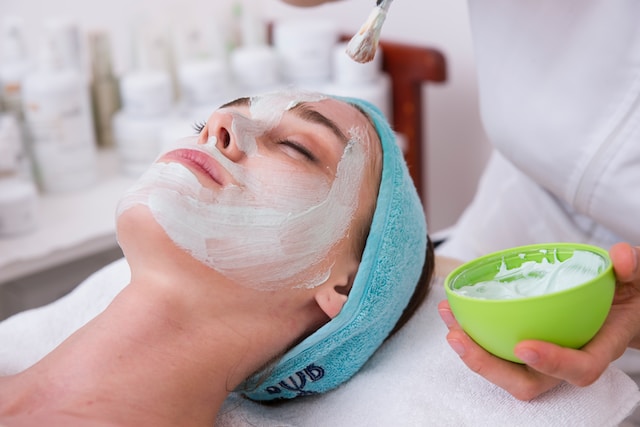A good skincare routine is essential for maintaining healthy, radiant skin. In addition to cleansing and moisturizing, using a mask and exfoliant can help to deep clean pores, remove dead skin cells, and promote cell turnover. However, with so many different products available, it can be difficult to know which ones are right for your skin type. In this article, we’ll explore how to choose the right mask and exfoliant for your specific needs.
Understanding Your Skin Type
Before selecting a mask or exfoliant, it’s important to understand your skin type. Here are the five main types:
- Normal skin: Balanced and not prone to excessive dryness, oiliness, or sensitivity.
- Dry skin: Lacks oil and moisture, often appearing flaky, rough, or tight.
- Oily skin: Overproduces oil, resulting in a shiny or greasy appearance and enlarged pores.
- Combination skin: Combination of oily and dry areas, with oily areas typically found in the T-zone (forehead, nose, and chin).
- Sensitive skin: Easily irritated by environmental factors, certain ingredients, or harsh products.
Once you’ve determined your skin type, you can select products that are specifically formulated to address your concerns.
Choosing a Mask
Masks come in many different forms, from sheet masks to clay masks to gel masks. Here are some key factors to consider when selecting a mask:
Ingredients
Look for ingredients that are tailored to your skin type and concerns. For example, if you have dry skin, look for masks that contain hydrating ingredients like hyaluronic acid or glycerin. If you have oily skin, look for masks that contain oil-absorbing ingredients like clay or charcoal.
Texture
Consider the texture of the mask and how it will feel on your skin. If you have dry or sensitive skin, you may prefer a gentle, hydrating mask. If you have oily or acne-prone skin, a clay mask may be more effective.
Purpose
Think about what you want the mask to do. Do you want to hydrate and soothe your skin, or do you want to deep-cleanse and detoxify? Different masks have different purposes, so be sure to select one that aligns with your skincare goals.
Choosing an Exfoliant
Exfoliants come in two main types: physical and chemical. Physical exfoliants use physical particles or tools to remove dead skin cells, while chemical exfoliants use acids to dissolve dead skin cells. Here’s what to consider when selecting an exfoliant:
Skin Type
Select an exfoliant that is appropriate for your skin type. If you have dry or sensitive skin, choose a gentle exfoliant that won’t strip your skin of its natural oils. If you have oily or acne-prone skin, a stronger exfoliant may be necessary to unclog pores and prevent breakouts.
Type of Exfoliant
Choose between physical and chemical exfoliants based on your skin type and preferences. Physical exfoliants can be harsher on the skin and may cause irritation if not used correctly, but they can be effective for removing dead skin cells. Chemical exfoliants are gentler on the skin and can be more effective for unclogging pores and promoting cell turnover.
Frequency
Consider how often you want to exfoliate. As a general rule, it’s best to exfoliate no more than two to three times a week. However, if you have sensitive skin, you may need to exfoliate less frequently.
FAQs
Q1. How often should I use a mask and exfoliant?
A1. It depends on your skin type and the specific product you are using. As a general rule, it’s best to use a mask once a week and exfoliate no more than two to three times a week. However, if you have sensitive skin, you may need to use these products less frequently.
Q2. Can I use the same mask and exfoliant for different parts of my face?
A2. Yes, you can use the same product for different parts of your face, as long as it is appropriate for your skin type. However, if you have combination skin, you may need to use different products for different areas of your face. For example, you may need a more gentle exfoliant for your cheeks and a stronger one for your T-zone.
Q3. Can I make my own mask and exfoliant at home?
A3. Yes, there are many DIY recipes available for masks and exfoliants that use natural ingredients like sugar, honey, and oatmeal. However, it’s important to do your research and ensure that the ingredients are appropriate for your skin type and won’t cause irritation or damage.
Q4. What should I do if my skin becomes irritated after using a mask or exfoliant?
A4. If your skin becomes irritated or inflamed after using a mask or exfoliant, stop using the product immediately. Rinse your skin with cool water and apply a gentle, soothing moisturizer. If the irritation persists or gets worse, consult a dermatologist.
Q5. Can I use a mask and exfoliant on the same day?
A5. It depends on your skin type and the specific products you are using. If you have sensitive skin, it’s best to use these products on different days to avoid over-exfoliating and irritating your skin. If you have oily or acne-prone skin, using a mask and exfoliant on the same day may be effective for deep-cleaning and unclogging pores.
Conclusion
Choosing the right mask and exfoliant for your skin type can help to improve the health and appearance of your skin. By understanding your skin type and selecting products that are appropriate for your concerns, you can create a skincare routine that works for you. Remember to always patch test new products and listen to your skin’s needs. With the right approach, you can achieve healthy, radiant skin that looks and feels its best. Don’t forget to share your favorite masks and exfoliants in the comments and on social media!
Source: https://thenewperfect.com/












